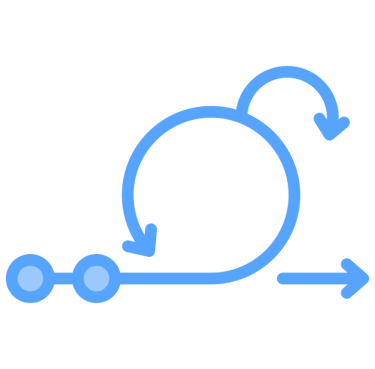Logistics and Inventory
CASE STUDY NO.3
Maintaining order in the smallest details of a production chain
This project focused on building a custom internal platform for managing inventory, distribution, and financial oversight inside a resin product manufacturing and distribution plant. The plant had grown significantly in output, but its internal systems for inventory and logistics had become inefficient, heavily manual, and prone to errors.
Operations like stock tracking, warehouse coordination, and order fulfillment were being handled through spreadsheets and fragmented tools. Additionally, their e-commerce system was not connected to the warehouse operations, which caused delays in product processing after a payment was made online.
Our objective was to develop a unified system that could automatically manage product flow, generate shipping materials, and alert staff to inventory thresholds, all while giving managers a real-time dashboard to monitor performance and finances.
About the project
Results and impact
Testing and validation
Research and design methods
Objectives
The new logistics and inventory system brought clarity, efficiency, and control:
Order processing time decreased by 45%, thanks to automated product list and label generation after website payments.
Stock-related errors dropped by 60%, due to real-time alerts for understock and overstock conditions.
Financial reporting was centralized, giving managers access to dashboards that combined revenue, costs, and inventory metrics in a single view.
We carried out role-based usability testing, giving early-access prototypes to warehouse staff and managers. Each user completed core tasks such as:
Confirming an incoming payment and seeing the auto-generated product list
Checking stock levels and responding to alerts
Navigating the financial dashboard for current metrics
Warehouse staff appreciated the clear visual hierarchy, which allowed them to quickly identify items that needed immediate attention. We tested the label-generation process with live printers to ensure format and timing were accurate.
We began with a process audit by shadowing warehouse staff, logistics coordinators, and operations managers. We documented the current flow of goods, from production to storage and shipment. This helped uncover redundant steps, miscommunications between departments, and gaps in stock visibility.
In parallel, we conducted stakeholder interviews to understand reporting needs — particularly for the financial dashboard. Managers needed data not only on current stock and orders, but also on production costs, shipping delays, and order revenue segmented by product category.
Improve inventory accuracy through real-time tracking across multiple warehouses.
Automate the generation of product lists and shipping labels after online orders are confirmed.
Provide stock alerts for low or excessive inventory, reducing waste and avoiding production gaps.
Offer a centralized dashboard for financial statistics, including revenue, order volume, and operational costs.
Simplify warehouse operations by giving employees clear, role-specific views and checklists.
We created process flow diagrams to visualize where automation could make the biggest impact — such as automatically printing labels once an online payment was confirmed, or flagging overstocked items that required redistribution.
With this foundation, we developed wireframes and modular interface components for warehouse operators, admin staff, and management. We built flexibility into the design so it could be scaled across different warehouse zones and product categories.
Management teams focused their feedback on the dashboard experience — requesting filters, summaries, and daily export options, which we later integrated.
Performance-wise, we conducted load simulations to ensure the system could handle hundreds of transactions and updates per day, without slowing down real-time inventory accuracy.
Tools & methodologies






To create more complex visual elements
Tested the different functionalities of the prototype
Adobe Illustrator
Implemented along side a multidisciplinary team
Used to make a high fidelity interactive prototype
Scrum
Useberry
Axure RP 10
Cross-functional coordination between production, warehouse, and shipping teams became streamlined.
The system is now scalable to multiple warehouse sites and adaptable to future product lines.
By automating operational processes and aligning inventory with online sales, the platform helped the company move from a reactive model to a proactive, data-driven workflow — saving time and reducing human error while improving distribution speed and inventory control.